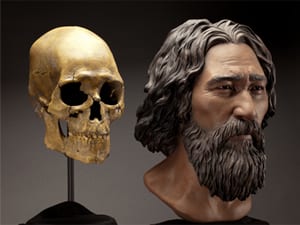SMU faculty and students presented research and led field trips for various sessions of the 2015 annual meeting in Dallas of the international Society of Vertebrate Paleontology.
Reporting for KERA News, North Texas’ public media news source, journalist Kat Chow covered the 2015 annual meeting in Dallas in October of the international Society of Vertebrate Paleontology.
The meeting was hosted locally by the Roy M. Huffington Department of Earth Sciences at SMU and the Perot Museum of Nature and Science in Dallas. SMU faculty and students presented research and led field trips for various SVP sessions.
Chow’s coverage also covered the research of SMU paleontologist Louis L. Jacobs, a professor in the Roy M. Huffington Department of Earth Sciences, Dedman College of Humanities and Sciences.
He carried out the study with paleontologist Anthony Fiorillo, vice president of research and collections and chief curator at the Perot Museum of Nature and Science, Dallas, and an adjunct research professor at SMU.
Jacobs and Fiorillo are co-authors of a study about the identification of new fossils from the oddball creature Desmostylia, discovered in the same waters where the popular “Deadliest Catch” TV show is filmed. The hippo-like creature ate like a vacuum cleaner and is a new genus and species of the only order of marine mammals ever to go extinct — surviving a mere 23 million years.
Desmostylians, every single species combined, lived in an interval between 33 million and 10 million years ago. Its strange columnar teeth and odd style of eating don’t occur in any other animal, Jacobs said. The new specimens — from at least four individuals — were recovered from Unalaska, an Aleutian island in the North Pacific.
The authors reported their discovery in a special volume of the international paleobiology journal, Historical Biology. The article published online Oct.1 at http://bit.ly/1PQAHZJ.
The KERA article aired and published Oct. 14, 2015.
EXCERPT:
By Kat Chow
KERA News
Everything I knew about paleontology conferences, I learned from TV and “Friends.” There was that time Ross and his girlfriend were prepping for a conference in Barbados.“By using CT scans and computer imaging, we can in a very real way bring the Mesozoic era into the 21st century,” Ross says.
In the real world, at the conference put on by the Society of Vertebrate Paleontology, the lingo isn’t so simple. Here are some of the session titles:
“A new large non-pterodactyloid pterosaur from a late-Jurassic interdunal desert environment with a neo-eolian nugget sandstone of Northeastern Utah.”
“The hemodynamics of vascular retia: Testing a hypothesis of blood pressure regulation through the artiodactyl carotid rete.”
“The effects of substrate, body position, and plasticity on the morphology of ruminant unguals.”
Louis Jacobs, a vertebrate paleontologist at Southern Methodist University, and Anthony Fiorillo, a paleontologist at Dallas’ Perot Museum, are helping organize the conference. Walking with them is like trailing a rock star — they’re inundated with fans and well-wishers.
”We specialize in animals with backbones, and how they’re preserved in the rocks, and what they mean, and what they tell us about the earth got to be the way it is,” Jacobs explains.



 $3.78 million awarded by Department of Defense to SMU STEM project for minority students
$3.78 million awarded by Department of Defense to SMU STEM project for minority students Kennewick Man: genome sequence of 8,500-year-old skeleton solves scientific controversy
Kennewick Man: genome sequence of 8,500-year-old skeleton solves scientific controversy At peak fertility, women who desire to maintain body attractiveness report they eat less
At peak fertility, women who desire to maintain body attractiveness report they eat less